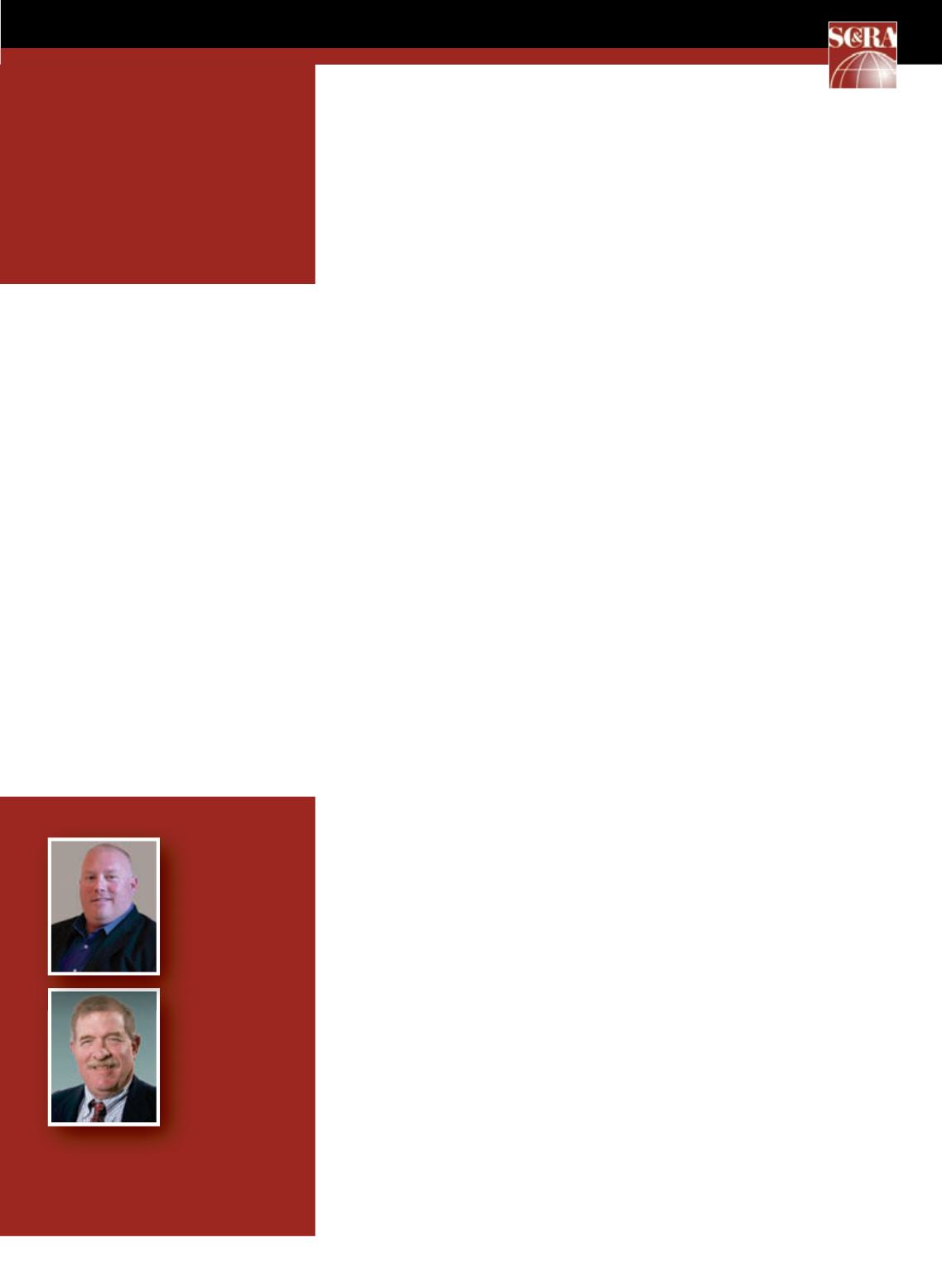
67
RISKMANAGEMENT
MAY 2014
ACT
>68
What do you know about
DOT Drug & Alcohol
Compliance?
ChrisNelson
and
Robert C. Moore
answer your questions.
Drug and
alcohol testing
requirements
How do I know if I am subject
to theU.S. Department of
transportation drug and
alcohol testing regulations?
Thedrug and alcohol testing rules under
theU.S.Department ofTransportation
(DOT) areoftenmisunderstood and
misappliedby fleetmanagement, leaving
many employees and employers asking
am I coveredby theDOTdrug and
alcohol testing regulations?
Review the following and answer a few
keyquestions inorder todetermine your
next steps regarding theDOTdrug and
alcohol regulations (Thedecision tree
is only a guide anddoesnot replaceor
supersede the actual regulations):
ASAN EMPLOYER, DO YOUOR YOUR
EMPLOYEES:
■
HoldaCommercialDriver’sLicense
(CDL), or similar license issuedby
MexicoorCanada, and
■
Operate aCommercialMotorVehicle
(CMV) inany state?
■
With a gross vehicleweight rating/
gross vehicleweight or gross combination
weight rating/gross combinationweight of
26,001 ormore lbs., or
■
designed to carry 16 ormore
passengers (including the driver), or
■
of any size that is used to transport
hazardousmaterialswhich require the
vehicle to be placarded
YES
-You
are
subject todrug&alcohol
testing regulationsunder:
FMCSA (49CFR part 382)
and
DOT (49CFR part 40)
NO
-You
arenot
subject todrug&alcohol
testingunderFMCSA (49CFRpart 382)
andDOT (49CFRpart 40) regulations.
ASAN EMPLOYEE:
■
Doyouoperate a truckorbus?
■
With a gross vehicleweight rating/
gross vehicleweight or gross combination
weight rating/gross combinationweight of
26,001 ormore lbs., or
■
designed to carry 16 ormore
passengers (including the driver), or
■
of any size that is used to transport
hazardousmaterialswhich require the
vehicle to be placarded
YES
-You
are
subject todrug&alcohol
testing regulationsunder:
FMCSA (49CFR part 382)
and
DOT (49CFR part 40)
NO
-You
arenot
subject todrug&alcohol
testingunderFMCSA (49CFRpart 382)
andDOT (49CFRpart 40) regulations.
Now that youhavedetermined the
regulatory impacts toyouroperation, the
following is a reviewof implementation
options for you to complywith the
standards.
What aremy options in
administeringmy DOT drug
and alcohol testing program?
There are threegeneralways inwhichyou
can runaDOTdrugandalcohol testing
program:
OPTION1:
Administer the program
internally. Youwould have on your own staff
urine specimen collectors and Screening
Test Technicians (STTs) / Breath Alcohol
Technicians (BATs),Medical ReviewOfficers
(MROs), and Substance Abuse Professionals
(SAPs) and support staff to run the program.
The testing laboratory would be the only
part of your program outside your own
organization.
OPTION2:
Outsource some of the program
functions to service agents. For example,
you could have your ownMRO and SAP but
contract with urine specimen collectors and
STTs / BATs to perform the collections, while
keeping a support staff to run the program.
OPTION3:
Outsource all of the program’s
functions to a vendor, called a “consortium”
or a “third-party administrator” (C/TPA), with
only aDesignated Employer Representative
(DER) and theDER’s support staff, if any,
remaining in-house.
NOTE: As anowner-operator in the
motor carrier industry, FMCSA
regulations require you tobelong toa
C/TPA to ensure your compliancewith
random testing.
THEAUTHORS:
ChrisNelson
isDirector of Risk
Management,
Transportation at
NBISConstruction &
Transport Insurance
Services.
Robert C.
Moore
is
Transportation
ProgramManager,
NBISConstruction &
Transport Insurance
Services.
J
ust over 20 years ago, the
Office ofDrug andAlcohol
Policy andCompliance
(ODAPC)was established to advise
theTransportation Secretary, theDOT
Agencies, and theUnitedStatesCoast
Guard (USCG) ondrug enforcement and
drug testing issues.
Today, employers in the trucking,
aviation, railroad, transit, pipeline, and
maritime industries are coveredby
ODAPC’s regulation. That regulation
governs thedrug and alcohol testing
process for pre-employment, random,
post-accident, reasonable suspicion/
cause, and required testing after an
employee returns towork after failingor
refusing a test.
Inpart one of a twopart series on this
misunderstood regulation,NBISRisk
Management teamwill breakdown the
requirements to assist indetermining
who is covered andwho is not.
NOTE:
This is the first article in a two-
part series on DOT Drug and Alcohol
Compliance. The second part of this article
will be published in the June issue of
ACT
.


